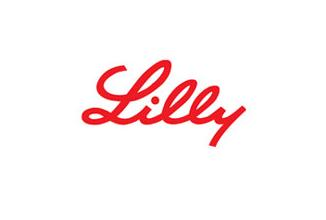fiercepharmaMarch 07, 2019
Tag: Eli Lilly , Generic , Humalog , price-hike , Insulin
Eli Lilly CEO David Ricks' absence from last week’s Senate Finance Committee hearing on drug prices didn’t go unnoticed. But as lawmakers from both sides of the aisle joined forces to rail against rising insulin prices, Lilly was preparing a real-world rebuttal.

The company said Monday it will roll out a cheaper version of its Humalog insulin at half the price of its popular brand. The new version, to be called Insulin Lispro, will bear a list price of $137.35 per vial and $265.20 for a five-pack of pens.
The move comes as Lilly—along with the other two top diabetes drugmakers, Sanofi and Novo Nordisk—draws increased political and legal scrutiny over insulin prices. The three companies face questioning about their price hikes on Capitol Hill later this month.
"Given the controversy around insulin pricing with high list prices but also large discounts, we think this makes sense to lower out of pocket costs and also ease public pressure on manufacturers," Credit Suisse Analyst Vamil Divan wrote in a Monday memo to clients.
Lilly isn't the first drugmaker to answer pricing criticism by rolling out a copycat before actual generics makers come to the party. Gilead Sciences last year launched authorized generics of its high-dollar hepatitis C drugs Epclusa and Harvoni after years of criticism about its sticker prices. Mylan famously put out an EpiPen generic at half the price of the brand after its repeated price hikes touched off an outcry—and led to its own round of Congressional hearings.
Rolling out a generic saves time and trouble, lowering patients' out-of-pocket cost more quickly than a list-price cut would have, the company said. The move also provides "payers time to renegotiate downstream contracts and adjust to new system economics," the company said.
Lilly said it has already started manufacturing the authorized generic, and it’s working with supply chain partners to make it available as soon as possible.
Just before the top pharma executives testified in front of the U.S. Senate Finance Committee last week, committee Chair Sen. Chuck Grassley, R-Iowa, and ranking Member Sen. Ron Wyden, D-Ore., unveiled an investigation specifically into rising insulin prices. They've sent letters to the three companies that control the U.S. insulin market, requesting information on their pricing practices and their interactions with pharmacy benefit managers (PBMs).
In his opening remarks during the committee’s first drug-price hearing on Jan. 29—before the pharma execs agreed to testify—Wyden picked out Humalog as an example. He noted that Humalog's per-vial cost jumped from $21 in 1996 to $275 today, a 13-fold increase.
"Humalog isn’t 13 times as effective as it used to be. A vial doesn’t last 13 times longer than it did in 1996," Wyden said, pointing out that the "real breakthrough" for insulin actually came in the 1920s.
Grassley and Wyden launched their insulin investigation soon after two Democratic lawmakers—Reps. Frank Pallone, chair of the House Energy and Commerce Committee, and Diana DeGette, chair of the Oversight and Investigations Subcommittee—launched a similar probe.
Biopharma companies have been blaming the upward swing in drug prices on PBMs and the rebates they extract in exchange for formulary positioning, and last week's hearing was no exception. And just as executives from AbbVie, AstraZeneca, Bristol-Myers Squibb and Pfizer rooted for the end of rebates during the hearing, Ricks also pointed the finger at PBMs in Lilly's Monday announcement.
"The significant rebates we pay on insulins do not directly benefit all patients. This needs to change," Ricks said. "There are numerous ideas, including the rebate reform proposal from HHS." Ricks was referring to a draft rule from HHS—led by former Lilly executive Alex Azar—that aims to phase out rebates paid to PBMs and insurers in Medicare and other federal health programs.
Sanofi CEO Oliver Brandicourt, in his own testimony before the Senate panel, said that if rebates were factored out, the average net price of its Lantus insulin has declined by more 30% since 2012, while patients’ out-of-pocket costs increased by 60%. Citing GoodRx data, Grassley and Wyden noted in their letter to Sanofi that Lantus’ list price has increased from $244 to $431 between 2013 and 2019.
"In this case, not only are discounts apparently not being passed on to patients, but patients are in fact being asked to pay more when PBMs and health plans are paying less for the medicine," the Sanofi CEO said in its prepared remarks. "This situation defies logic and should not happen."
In addition to pressure from Washington, the top three insulin makers are also facing class-action lawsuits. A new Jersey federal judge recently allowed claims that the three companies engaged in an "arms race" in hiking list prices to be argued in court.
Register as Visitor to CPhI China 2019!

-----------------------------------------------------------------------
Editor's Note:
To apply for becoming a contributor of En-CPhI.cn,
welcome to send your CV and sample works to us,
Email: Julia.Zhang@ubmsinoexpo.com.


Contact Us
Tel: (+86) 400 610 1188
WhatsApp/Telegram/Wechat: +86 13621645194
Follow Us:




 Pharma Sources Insight January 2025
Pharma Sources Insight January 2025


